I’m a dinosaur. I have been in this business for more than a quarter century. My first book was published during the Clinton Administration. I could list for you all the celebrities born since that first publication, but I’ve never heard of any of them…
To state the obvious, the business has changed in the time I’ve been a professional writer. Hell, the entire world has changed. Some of the transitions specific to publishing have been for the better, some have not. And, to make all of this a bit stranger, many of the biggest changes fall into both those categories.
Lately, I find myself thinking about the democratization of the arts facilitated by the digital revolution, trying to balance the good with the not-so-good.
Example 1: A dear friend of mine, one of my musical partners from college, has been recording and performing music for years. He does covers, he writes his own material. Prior to the pandemic, he performed regularly in the area around his home in the Northeast. Since the onset of COVID, he has done a series of online concerts and has also produced videos of himself playing — again, his own tunes and covers of songs by others. His music always — ALWAYS — sounds amazing. Not only is he incredibly talented, he has also mastered the technology at his disposal. The result is great music with astonishing production values.
Without digital technology, without the ability to turn his basement into both a recording studio and a performance space, he couldn’t manage to do any of this. Of course, he is hardly alone in this regard. Musicians around the world can now record and produce their own music, reaching audiences that they never would have found twenty years ago. And it is hard for me to look at this as anything but an unalloyed good. Major recording studios should not be the only arbiters of what you and I get to hear. Once upon a time, they were, but not anymore. As a musician myself, and as a fan of music in general, I’m pleased by this.
Example 2: As most of you know, I am an avid photographer. I specialize in nature photography — landscapes and close-up work — but I also have done a good deal of urban photography. I am, I believe, a very good photographer. I have also been, for years and years, a collector of photography books, and I have a small collection of photo prints by other artists, as well as many of my own enlarged images, framed, and hung on the walls of my home.
I have a high quality digital camera and I have several applications on my computer that allow me to process my photos to a fine degree. Once upon a time, when I first got into this hobby and was still shooting film, I was very much at the mercy of the photo labs that developed my pictures. I couldn’t control the production of each image the way, say, Ansel Adams did in his darkroom. Only with the advent of digital technology, have I gained access to the tools I need to develop my photos precisely as I wish to. At this point, I can produce professional quality images. My best photos, the ones on my walls as well as those in the one coffee table photography book I have created, can stand alongside the best images by some of my favorite professional photographers.
As with the musical example, given how much joy I derive from my photography and my ability to produce images with such quality results, I have a hard time seeing this as anything but a positive historical development.
Except…
Example 3: In my capacity as a writer, I have seen the impact of the digital revolution on my own profession. Yes, more and more authors can now reach readers. Authors who might otherwise have never had a chance to get past the gatekeepers at major publishing houses, can now put their stories within reach of audiences that crave what they offer. This means that unconventional, risk-taking stories can now be told and sold. It means that diverse voices now have an outlet for their work. Authors of any race, of any gender identity, of any sexual orientation, of any religious or cultural background, now have an easier time making themselves heard. I welcome all of these changes.
But those of us who are familiar with the publishing business also know that the democratization of publishing has not been an unalloyed good. Yes, eloquent voices who for too long were excluded from mainstream publishing are now reaching audiences. But there are also too many books being produced that require substantial editing, but aren’t getting any. There are too many authors now being published who weren’t excluded from the field because they were innovative or speaking from underrepresented groups — they were excluded because they had not yet mastered the rudiments of writing prose and creating narrative.
I know lots of young, talented authors — of different genders, races, cultural traditions — who are deserving of success in publishing, but who can’t make themselves heard in the new marketplace, because that market is already flooded with stories, many of them of questionable quality. Because I know the publishing world so well, I understand the nuances of these new dynamics, the good and the bad.
And I find myself reconsidering all that I said before about music and photography. I don’t know those industries the way I know the literary world, but I have to imagine that musicians and photographers face the same struggles and frustrations writers do. I do have a friend who is a professional photographer. He is successful, having worked for years for National Geographic and other prestigious publications. I know the fact that amateur photographers like me can now make our work look “professional” has made his business harder to maintain. I have no doubt that many professional musicians face similar challenges. So all the confidence I expressed earlier in this piece, about how the opening up of technologies in music and photography to everyone is nothing but good — that now strikes me as ill-considered, a reflection of my ignorance.
I have no answers. To be honest, I’m not entirely certain what questions I’m asking. I simply know that the artistic world has changed thanks to digital technology and the opening of artistic industries to everyone from the most advanced professional to the laziest weekend hobbyist. Lots of good has come of this. But for those who make their livings in the arts, these changes, taking place on a historic scale, present new and daunting challenges as well.









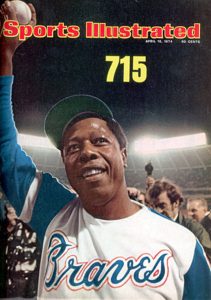 I was watching that night, along with pretty much every other eleven year-old, baseball-loving boy in America. I remember everything about it — the call from announcer Vin Scully, the twist and high stare of Dodgers pitcher Al Downing as he watched the ball sail out over left field, Aaron’s joyful trot around the bases, the two white guys in civilian clothes who appeared out of nowhere as he rounded second base and patted his back and shoulder, the way his jubilant teammates mobbed him at home plate and put him on their shoulders. I still have the issue of Sports Illustrated from the next week, with Aaron on the cover holding up the baseball next to a golden, bolded “715.” And I also still have the special edition baseball card Topps issued that same year proclaiming Aaron baseball’s home run king.
I was watching that night, along with pretty much every other eleven year-old, baseball-loving boy in America. I remember everything about it — the call from announcer Vin Scully, the twist and high stare of Dodgers pitcher Al Downing as he watched the ball sail out over left field, Aaron’s joyful trot around the bases, the two white guys in civilian clothes who appeared out of nowhere as he rounded second base and patted his back and shoulder, the way his jubilant teammates mobbed him at home plate and put him on their shoulders. I still have the issue of Sports Illustrated from the next week, with Aaron on the cover holding up the baseball next to a golden, bolded “715.” And I also still have the special edition baseball card Topps issued that same year proclaiming Aaron baseball’s home run king.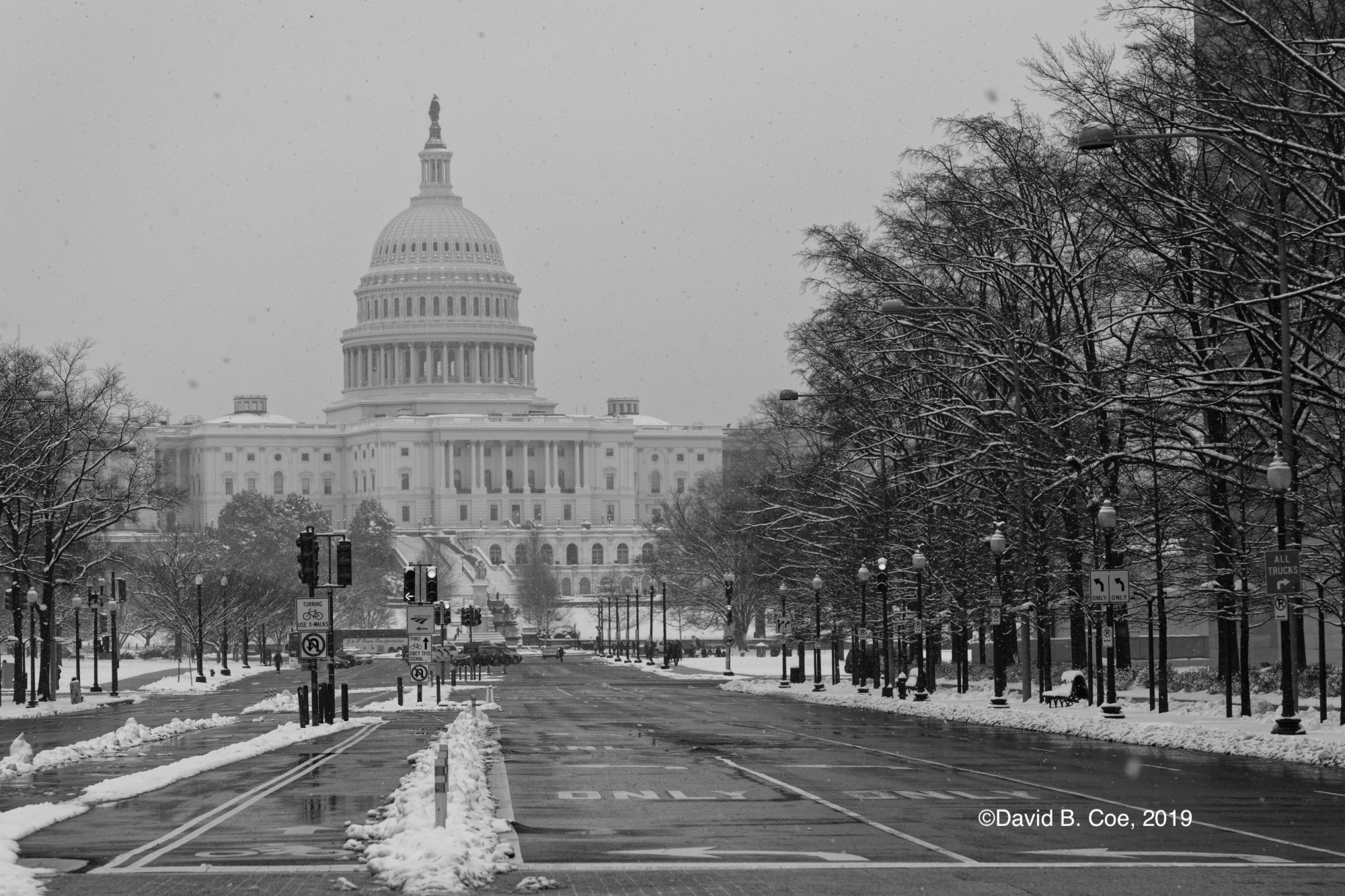
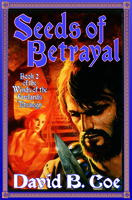
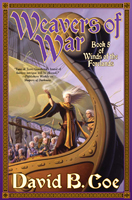 For the Winds of the Forelands series (Rules of Ascension, Seeds of Betrayal, Bonds of Vengeance, Shapers of Darkness, Weavers of War) , I created what is without a doubt the most complex “calendar” I’ve ever undertaken for any project. For those of you not familiar with the world, I’ll give a very brief description. The world has two moons, Ilias and Panya, the Lovers, who chase each other across the sky. Each turn (month) has one night when both moons are full (the Night of Two Moons) and one night when both moons are dark (Pitch Night). Each turn is also named for a god or goddess, and so each Night of Two Moons and each Pitch Night has a special meaning.
For the Winds of the Forelands series (Rules of Ascension, Seeds of Betrayal, Bonds of Vengeance, Shapers of Darkness, Weavers of War) , I created what is without a doubt the most complex “calendar” I’ve ever undertaken for any project. For those of you not familiar with the world, I’ll give a very brief description. The world has two moons, Ilias and Panya, the Lovers, who chase each other across the sky. Each turn (month) has one night when both moons are full (the Night of Two Moons) and one night when both moons are dark (Pitch Night). Each turn is also named for a god or goddess, and so each Night of Two Moons and each Pitch Night has a special meaning.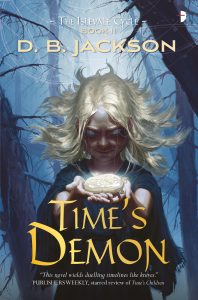 I did something similar for the Islevale Cycle novels (Time’s Children, Time’s Demon, Time’s Assassin). In this world there are two primary deities, Kheraya (female) and Sipar (male), and the calendar is structured around them. It begins with the spring equinox — Kheraya’s Emergence, a day and night of enhanced magickal power and sensuality. The spring months are known as Kheraya’s Stirring, Kheraya’s Waking, Kheraya’s Ascent. The summer solstice is called Kheraya Ascendent, a day of feasts, celebration, and gift-giving. This is followed by the hot months of summer: Kheraya’s Descent, Fading, and Settling.
I did something similar for the Islevale Cycle novels (Time’s Children, Time’s Demon, Time’s Assassin). In this world there are two primary deities, Kheraya (female) and Sipar (male), and the calendar is structured around them. It begins with the spring equinox — Kheraya’s Emergence, a day and night of enhanced magickal power and sensuality. The spring months are known as Kheraya’s Stirring, Kheraya’s Waking, Kheraya’s Ascent. The summer solstice is called Kheraya Ascendent, a day of feasts, celebration, and gift-giving. This is followed by the hot months of summer: Kheraya’s Descent, Fading, and Settling.